Root of Desire Charwei Tsai solo exhibition
8 December 2018 – 20 January 2019
TKG+
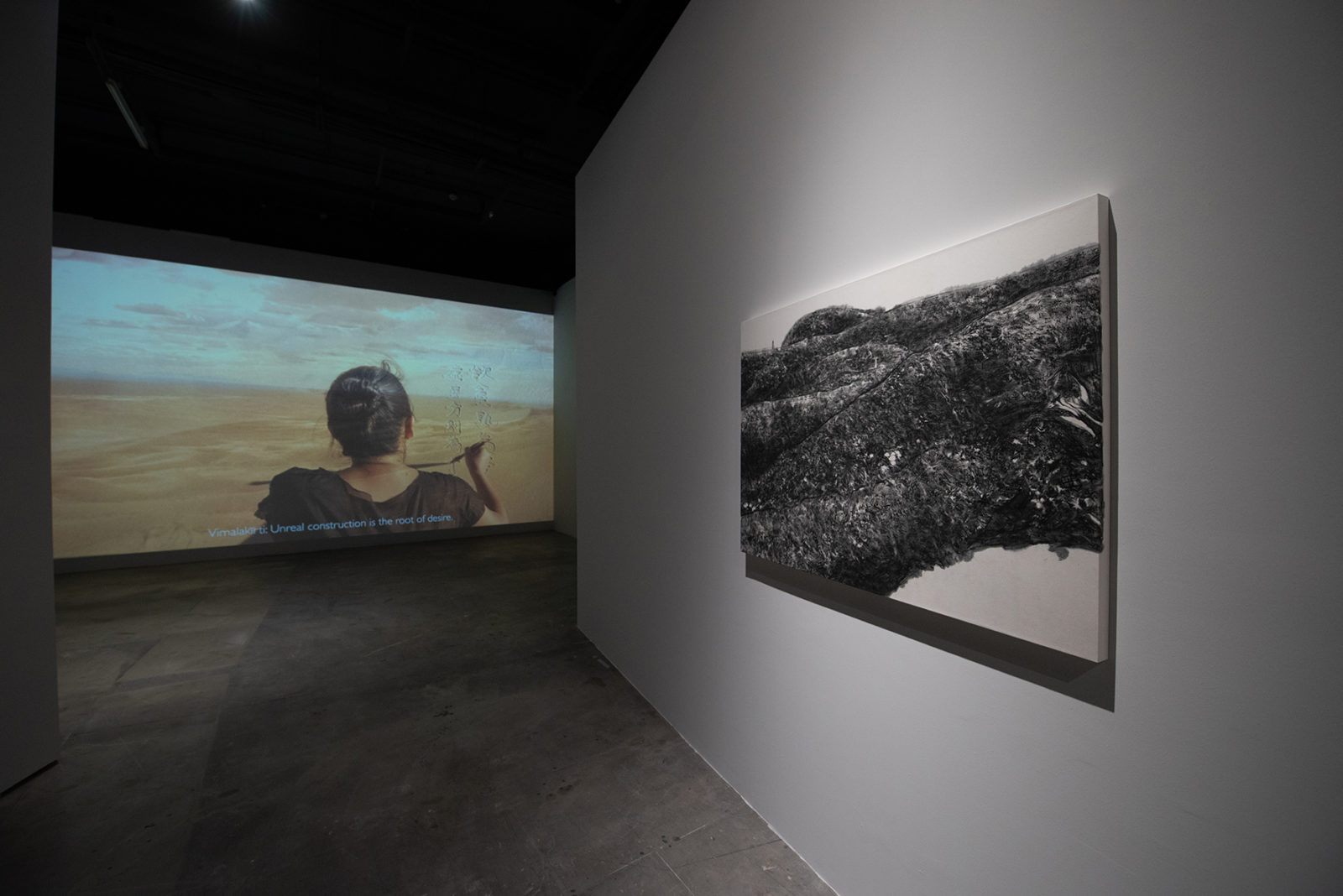
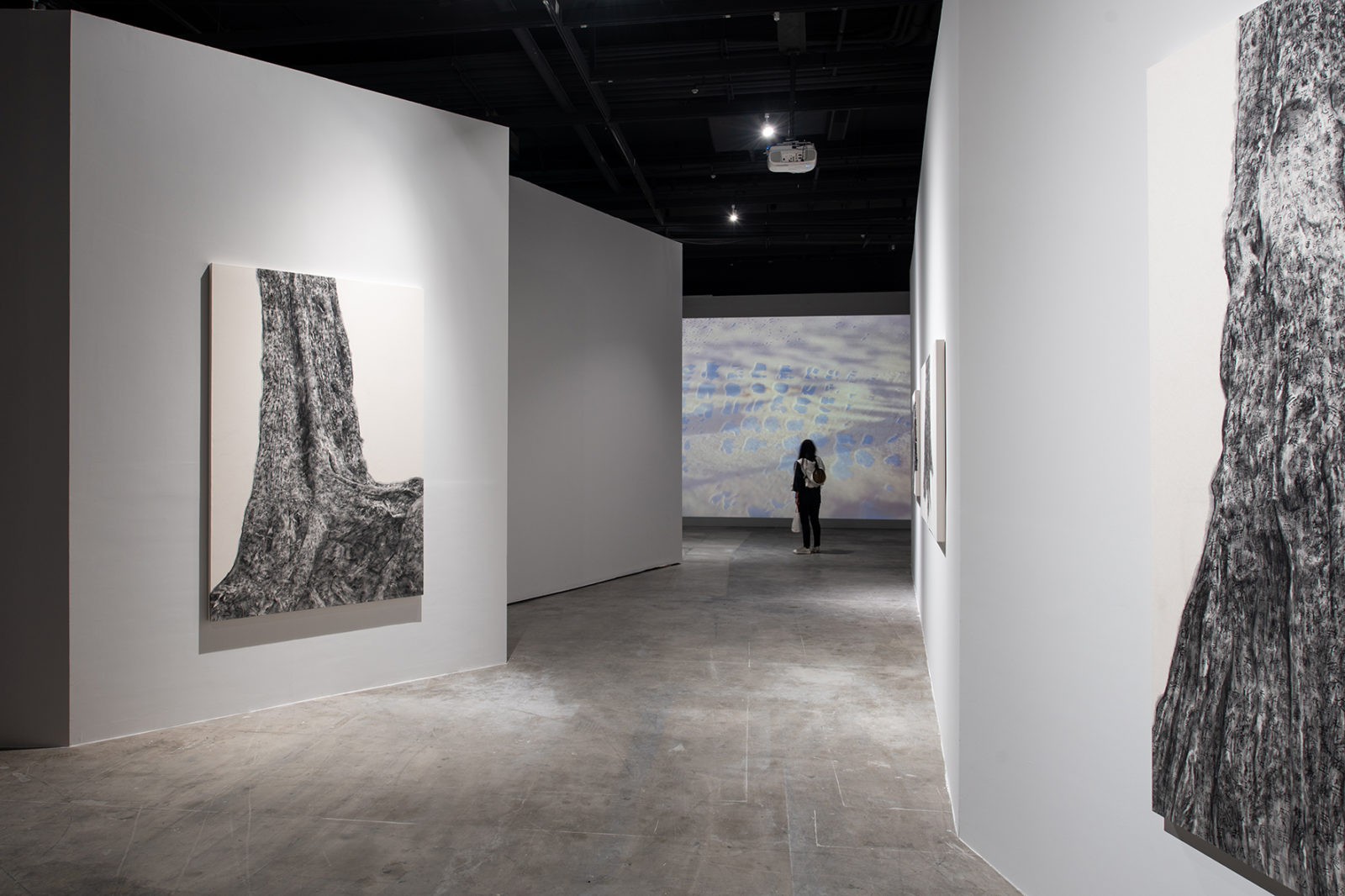


Charwei Tsai’s solo exhibition, the Root of Desire, centers around desire and preludes to the classical maieutic discourse of the Vimalakirti Sutra. It is a profound and sophic exploration of the metaphysical troika encompassing her own life, nature, and humanity. This ancient spiritual text is one of the first recorded in Asia that discusses women’s rights and gender equality. When asked “How should one look at a sentient being?” Vimalakirti responded, “the way a wise person looks at the reflection of the moon in water.” The non-duality “propositioned” in the text alludes to equality and sameness. The exhibited works showcase Tsai’s long-term examination of Mahāyānaand Hīnayāna Buddhismand is an experiment in exhibiting both her personal and social practice.

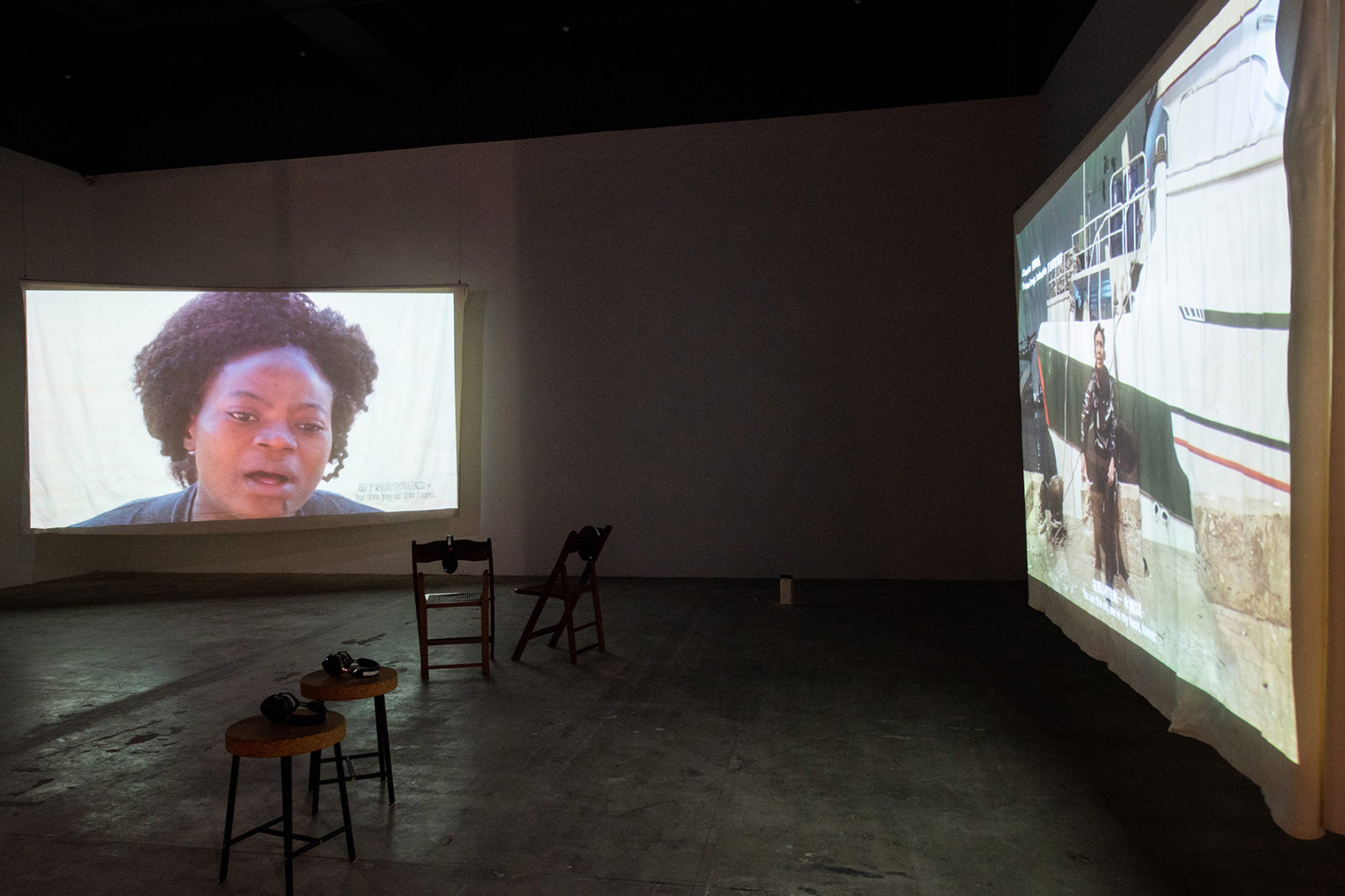
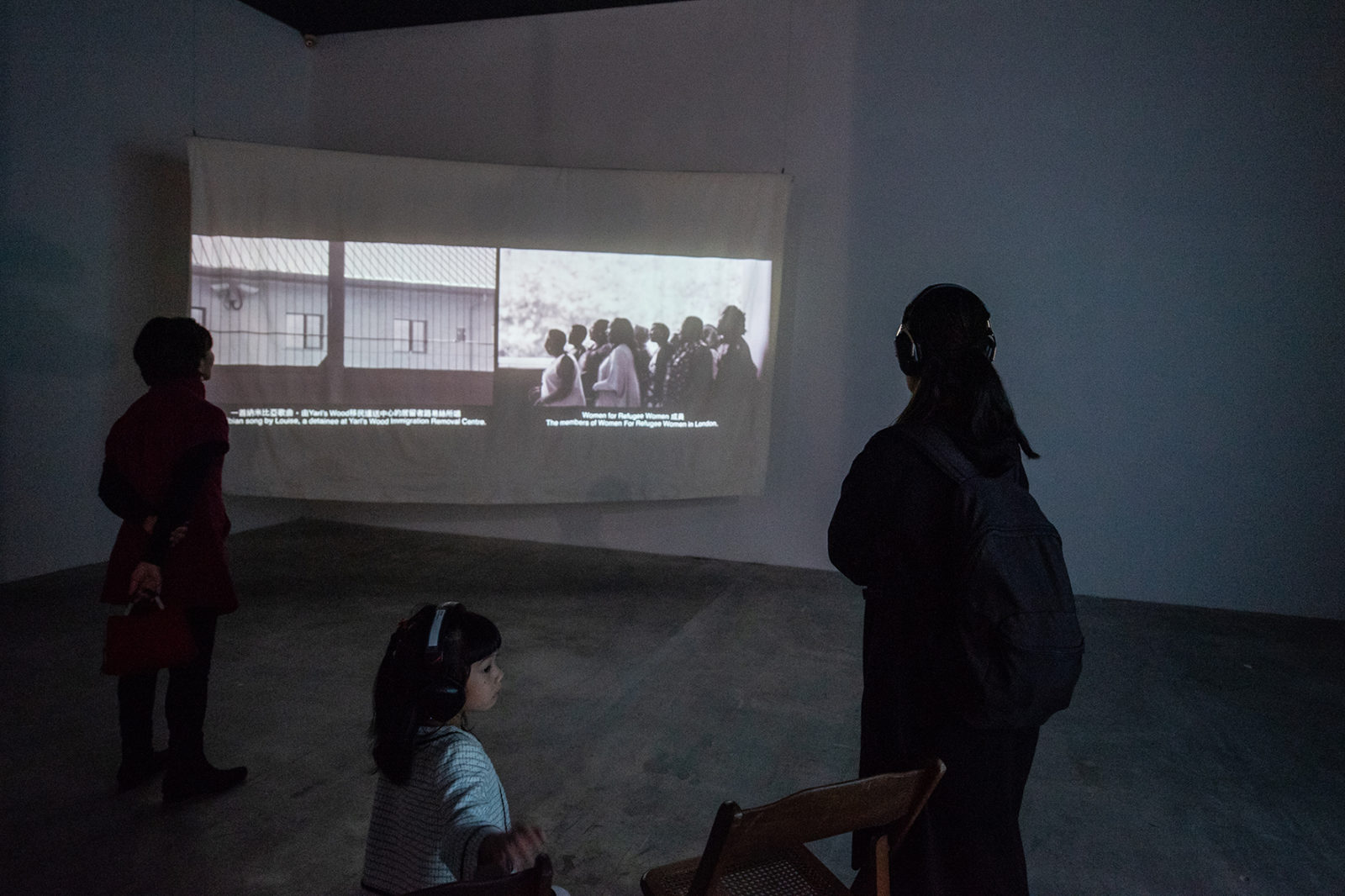

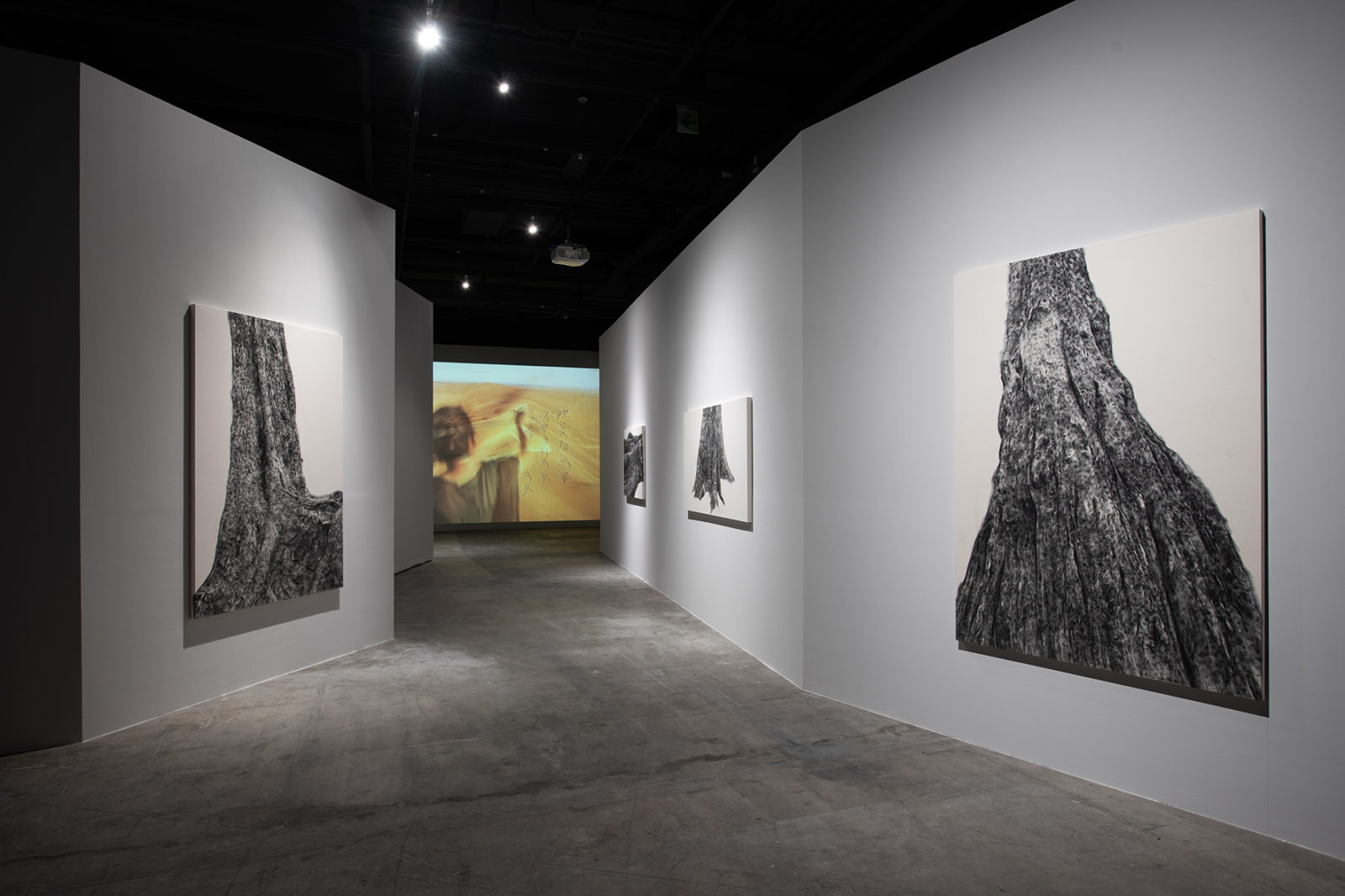
Transcribing the Vimalakirti Sutra, the artist imprints this vessel for emptiness upon her impermanent form until she becomes one with it. It is with this that the artist unveils the exhibition with a video work, Water Moon(2017). Nature as her metaphor, the artist captures the moon’s reflection in a dark pool alluding to the simultaneous existence of reality and illusion or the mundane and the sublime. The exhibition moves on to a personal journey through a vast desert landscape portrayed in the new video installation, Root of Desire(2018). In this work, the artist inscribes a conversation between Vimalakirti and Manjusri that deconstructs desire into rootlessness. As the sand is scattered by the wind, the text also disintegrates. The work articulates the search for desire in its differing manifestations.
In a new series of drawings, “The Goddess” (2018), the artist inscribes a text from the sutra onto drawings of a forest. This excerpt derives from a notable passage in the sutra: a Goddess conducts a gender exchange between herself and a monk to illustrate equality between the sexes. “The Goddess” marks a transition from the more introspective works to the outward-looking projects on social change that mark the artist’s recent works.The artist contemplates nature at this stage to exemplify the Buddhist philosophy of emptiness, which is the experiential understanding that all compounded things disintegrate.
Three videos installations of people forcibly scattered across the corners of this world mark the end of this journey.The three video installations, Songs of Chuchepati Camp, Nepal (2017), Hear Her Singing (2017), and Songs of Kaohsiung Migrant Workers(2018), capture people from all over the world who in face of displacement as a result of social, political, and economic injustice. The artist thus shifts her focus to humanity and collects a series of voices that have been overlooked in this world.Various songs expressing the universal sentiments of the desire for love and the fear for separation are vocalized by earthquake victims from Nepal; female asylum seekers detained in the UK from Iran, India, Jamaica, Kyrgyzstan, Namibia, Sri Lanka, and other locations, as well as Southeast Asian and Africa migrant workers in Kaohsiung. Their voices bridge a connection that transcends race, economics, culture, and religion.Tsai’s creation is redolent with ideas from Buddhist philosophy and her own understanding of life, aspiring to compel the masses and negotiate equilibriums between dichotomous extremes.
The solo exhibition catalogue will be released during the exhibition as well. It will embody interview with Stephanie Rosenthal, director of Martin-Gropius-Bau Museum in Berlin and essay by Tiffany Leung, curator of Centre for Chinese Contemporary Art (CFCCA) in Manchester.
